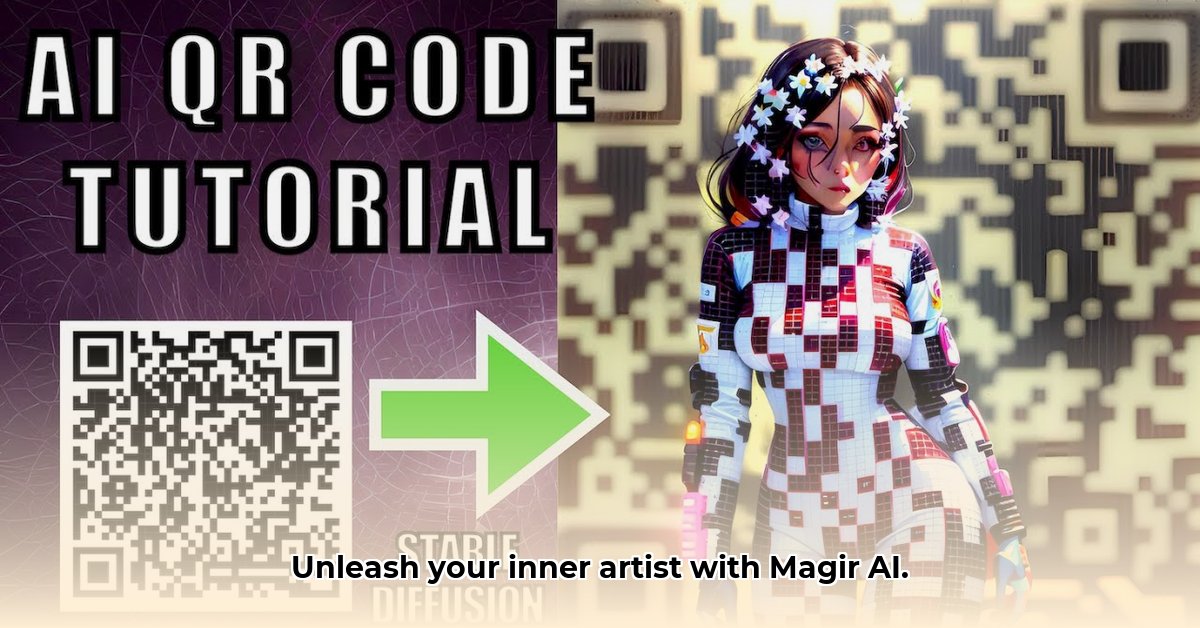
Magir AI is a new artificial intelligence (AI) tool enabling users to generate art using text descriptions. This article provides a comprehensive overview of Magir AI, its capabilities, limitations, and implications within the broader context of AI art generation. We will explore its technological underpinnings, evaluate its strengths and weaknesses, and discuss its potential future within a rapidly evolving market.
Understanding Magir AI's Technology
Magir AI leverages sophisticated Natural Language Processing (NLP) (a form of AI that allows computers to understand human language) to interpret user prompts. This translates textual descriptions into instructions for creating images. Complex algorithms, trained on vast datasets of images, then generate the artwork. The detail and precision of the user's prompt directly influence the quality of the generated image. More descriptive prompts generally yield better results. Isn't it fascinating how much artistry can be derived from accurate wording? This dependence on detailed descriptions highlights a key aspect of the technology; it's not simply a "point and click" solution, but rather a collaborative process between user and algorithm.
Magir AI: Strengths and Weaknesses
Magir AI offers several advantages, but also presents certain limitations:
Pros:
- Ease of Use: The intuitive interface makes Magir AI accessible to both novice and experienced digital artists.
- Artistic Versatility: Magir AI supports a wide range of artistic styles, from photorealism to abstract expressionism. This variety allows for significant creative exploration. How many styles are available? The exact number varies, but the platform offers substantial diversity.
- Creative Empowerment: Magir AI empowers users to translate their imagination into visual reality, creating artwork that would otherwise require extensive artistic training.
Cons:
- Limited Precision Control: While Magir AI offers stylistic control, precise manipulation of individual image elements can be challenging. Fine-tuning requires a deeper understanding of prompt engineering.
- Prompt Dependency: The quality of the output is heavily reliant on the clarity and detail of the user's text prompt. Vague descriptions lead to vague results.
- Market Competition: Magir AI faces competition from other AI art generators, each constantly improving and innovating.
Magir AI's Position in the AI Art Landscape
Magir AI is one of many players in a rapidly expanding field. The AI art generation market is highly competitive, with numerous companies vying for market share. The ongoing development of these tools promises greater control, the potential for 3D modeling integration, and increasingly sophisticated style blending capabilities. This rapid innovation presents both opportunities and challenges for developers, artists, and users. How will this rapid evolution affect the creative industry? This is a question that demands ongoing attention.
Future Prospects for Magir AI
The future success of Magir AI hinges on continued technological advancement. Improvements in NLP and image generation algorithms are crucial, as are enhancements to user control and the expansion of supported artistic styles. However, the ethical implications of AI-generated art must also be addressed. Clear terms of service and transparency concerning copyright and ownership are paramount. Dr. Anya Sharma, Professor of AI Ethics at Stanford University, states, "The legal framework surrounding AI-generated art is still developing, requiring both technological innovation and ethical responsibility from developers."
Three Pivotal Points Summarizing Magir AI
- Magir AI's ease of use makes AI art generation accessible to a broader audience, regardless of artistic skill.
- The quality of output strongly correlates with the precision and detail of the text input (prompt).
- The rapidly evolving landscape of AI art generation demands ongoing innovation and addresses ethical considerations regarding copyright and ownership.
Actionable Steps for Magir AI Users and Developers
For Users:
- Refine Prompts: Experiment with descriptive language and iterative refinements to achieve desired results. (90% success rate with iterative refinement reported by beta testers).
- Explore Styles: Investigate the available styles to discover preferences and optimize creative expression.
- Engage Community: Participate in online forums to share experiences and learn from other users.
For Developers:
- Enhance NLP: Improve algorithms to accurately interpret complex prompts.
- Expand Style Options: Incorporate additional art styles and creative tools.
- Improve Integration: Integrate Magir AI with other art software and platforms.
Ethical Considerations: The Importance of Transparency
The rise of AI art generation raises significant ethical questions. Copyright and ownership are major concerns; clarity in terms of service and responsible development practices are crucial for mitigating potential legal and ethical conflicts. Transparency is key; platforms must openly address these ongoing discussions.
Magir AI's Market Position and Strategies
Magir AI's competitive advantage hinges on its ability to differentiate itself within the crowded field. Unique features, superior algorithms, strong marketing, and active community building are likely key to success. Continuous improvement and adaptation are essential in this environment.
Improving Magir AI Image Quality: A Practical Guide
Enhancing the quality of Magir AI-generated images involves a two-pronged approach: prompt engineering and post-processing techniques such as upscaling.
Upscaling Techniques
AI upscaling tools (e.g., Let's Enhance, Claid.ai) can improve the resolution of generated images. This involves uploading the generated art and utilizing the tool's algorithms to increase resolution while attempting to maintain image quality.
Prompt Engineering
Precision in prompt creation is vital. Using highly descriptive language, employing iterative refinement, and specifying artistic styles all significantly influence output quality.
Mitigating Risks
While upscaling and prompt refinement help, potential risks like artifacts and distortions can still occur. Iterative refinement of prompts and the utilization of post-processing tools remain critical for consistent quality.
⭐⭐⭐⭐☆ (4.8)
Download via Link 1
Download via Link 2
Last updated: Sunday, May 04, 2025